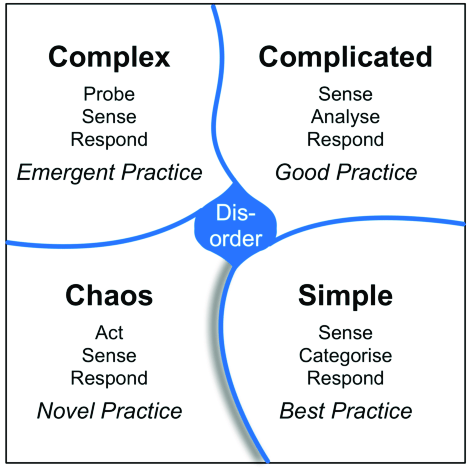INTRODUCTION
Within a matter of weeks our lives have been transformed. We are balancing life, family, and work all within the bubble of our makeshift home offices, virtual classrooms and physical distancing. Our wits are being pushed to the max and we are having to find new strengths within ourselves to adapt and stay productive in uncertainty.
No jobs are safe, layoffs are a reality, and every day there is a new COVID update that pushes us further down the path of the unknown. Business leaders and consultants thrive best with context and familiarity. This global crisis reminds us of 2008, the great depression, and 911 as we try to draw parallels between past events and COVID. We seek to find context from the past but the truth is that no certainty exists.
For leaders, you will find that the tools and approaches that you are used to leaning on, no longer offer the same value and results. When leading through chaos leaders need to adapt to a new method of problem-solving and thinking.
THE CYNEFIN FRAMEWORK
The Cynefin framework, which was created by Dave Snowden of IBM in the 90s, buckets the types of problems leaders face as simple, complicated, complex or chaos.

Simple problems are operational issues that are easily understood and solved through better processes, SOPs, or standardization. Complicated problems take longer to solve as the solutions require data analysis and research but they too are solvable. Complex decisions, on the other hand, have multiple solutions, but eventually, one or two options emerge as front runners. The difference with chaotic problems is that no right or wrong answers exist and the leader must choose between the lesser of two evils (i.e. sending everyone home to ensure health and safety vs. keeping the business operating).
HOW TO LEAD THROUGH CHAOS
We are living and leading in a chaotic storm. There are no precedents, no best practices and little predictive data to foresee the future. When leading in Chaos the best approach is to ACT, SENSE, and RESPOND. This is the moment for mindful leadership and an opportunity for you to accelerate and grow as a leader. Every day will be a new challenge and yesterday’s solutions are no longer viable.
At the end of this crisis, the leaders who will emerge and the businesses which will thrive will be those that treat each day as a blank slate. Leaning into the current state of their numbers, team health, and current environment and make decisions based on that knowledge.
It doesn’t mean don’t plan for the worst, but it does mean to trust your instincts, listen to your values, act, and respond accordingly.



